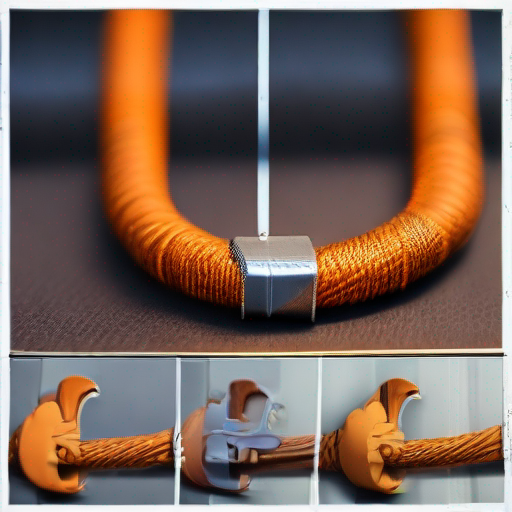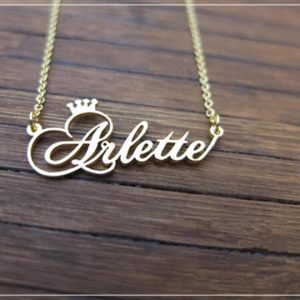Stainless Steel Necklace Rust Is A Common Problem Many People Face Today

Stainless Steel Necklace Rust: A Common Problem Many People Face Today
When it comes to jewelry, stainless steel necklaces are a popular choice among many individuals. Not only are they durable and long-lasting, but they're also resistant to corrosion, making them an excellent option for those who live in areas with high humidity or harsh weather conditions. However, despite their reputation for being rust-resistant, many people still experience issues with stainless steel necklace rust. In this article, we'll delve into the world of stainless steel necklaces and explore the common problems that arise when it comes to rusting.
What Causes Stainless Steel Necklace Rust?
Before we dive deeper into the issue, let's first understand what causes stainless steel necklace rust in the first place. Stainless steel is a type of alloy that contains a minimum of 10.5% chromium content. This chromium content reacts with oxygen and moisture to form a thin layer of oxide on its surface, which acts as a natural barrier against corrosion. However, when this barrier is compromised or damaged, the underlying metal can react with oxygen and moisture to form rust.
There are several reasons why stainless steel necklace rust might occur:
- Oxidation: When stainless steel comes into contact with oxygen and moisture, it can cause oxidation, leading to the formation of rust.
- Pitting: Small pits or scratches on the surface of the metal can provide a pathway for corrosion to occur, causing rust to form.
- Environmental Factors: Exposure to harsh weather conditions, such as high humidity, saltwater, or extreme temperatures, can accelerate the rusting process.
- Poor Maintenance: Failure to clean and maintain the necklace properly can lead to rust formation.
Table: Common Causes of Stainless Steel Necklace Rust
| Cause | Description |
|---|---|
| Oxidation | Reaction with oxygen and moisture forms a thin layer of oxide on its surface. |
| Pitting | Small pits or scratches provide a pathway for corrosion to occur. |
| Environmental Factors | Exposure to harsh weather conditions accelerates the rusting process. |
| Poor Maintenance | Failure to clean and maintain the necklace properly leads to rust formation. |
How to Prevent Stainless Steel Necklace Rust
Preventing stainless steel necklace rust is crucial to maintaining the longevity of your jewelry. Here are some tips on how to prevent rust from forming:
- Clean Your Necklace Regularly: Use a soft cloth and mild soap solution to clean your necklace regularly. This will help remove dirt, grime, and other substances that can contribute to rust formation.
- Dry Your Necklace Thoroughly: After cleaning your necklace, make sure to dry it thoroughly with a soft cloth. This will help prevent moisture from accumulating on the surface of the metal.
- Avoid Exposure to Harsh Weather Conditions: Try to avoid exposing your necklace to harsh weather conditions such as high humidity, saltwater, or extreme temperatures.
- Store Your Necklace Properly: Store your necklace in a cool, dry place away from direct sunlight. Avoid storing it in areas with high humidity or exposure to moisture.
What to Do If Your Stainless Steel Necklace Rusts
Despite taking precautions, rust can still occur on your stainless steel necklace. Here's what you should do if your necklace rusts:
- Identify the Cause: Identify the cause of the rust and take steps to prevent it from happening again in the future.
- Clean the Rust: Use a soft cloth and mild soap solution to clean the rust off the surface of the metal. Avoid using harsh chemicals or abrasive materials that can damage the metal further.
- Polish the Metal: Once you've removed the rust, use a polishing cloth or solution to restore the shine and luster to your necklace.
Conclusion
Stainless steel necklace rust is a common problem many people face today. By understanding what causes rust to form and taking steps to prevent it, you can maintain the longevity of your jewelry. Remember to clean your necklace regularly, dry it thoroughly after cleaning, avoid exposure to harsh weather conditions, and store it properly to prevent rust from forming.
Key Takeaways
- Stainless steel necklace rust is caused by oxidation, pitting, environmental factors, or poor maintenance.
- Preventing rust requires regular cleaning, thorough drying, avoidance of harsh weather conditions, and proper storage.
- If your necklace rusts, identify the cause, clean off the rust, and polish the metal to restore its shine.
For more information on stainless steel necklace rust and how to prevent it, visit stainless steel necklace rust.

